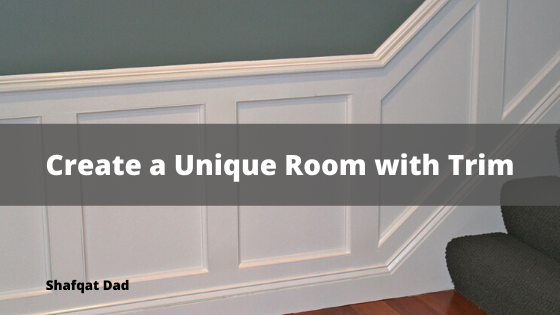When we think of decorating a room, we think of the basics: paint, flooring and window treatments. From there, we create a theme for the room, whether it is based on a colour, a style or an object. For walls, the usual thinking is to use paint and hang up some pictures and/or a mirror. Yet, there is another way to decorate them: trim. I know you must be thinking of a baseboard or a chair rail. Yet, there is much more to trim than meets the eye. You can use trim, in various lengths and widths, to create patterns or geometric shapes on your walls or just on one as a feature wall.
There are several types of trim to choose from. Most trim is around doors and windows. However, it is also where the wall meets the floor (or ceiling) as well as on the ceiling. It gives the room an architectural style as well as expands the space. There are different types of casings and jambs along with unique pieces such as wainscoting, ceiling medallion, stool, and apron. Each one has a signature look and function. However, you can use trim in very creative ways:
- Framing a picture — Trim with a narrow width can be used to frame an already framed picture or photograph. It can also be used to frame an area for a group of pictures.
- Texture — If you have a half wall (e.g. wall underneath a built-in shelf), you can decorate it with wainscoting as a contrast to the paint colour above it. This adds texture to the wall. You can also divide a wall horizontally with wainscoting as a design element.
- Shapes — Using trim to create squares of different sizes, especially underneath a chair rail, adds depth to the room. It’s also an easy and affordable way to decorate.
- Backdrop — Instead of using wallpaper, why not use trim? By using squares (one size or various sizes), you can add interest to a wall. You can paint the entire wall or just the interior (or exterior) of the squares. Put beaded board on the entire wall and then place trim over it to create smaller squares. You can also use the beaded board diagonally in each square.
- Lattice — Another way to give depth to a wall is to use trim in a lattice pattern. Depending on the width of the trim, you can create a lattice that can hold objects in each box. You can paint the lattice trim or the wall behind it for a visually stunning look.

